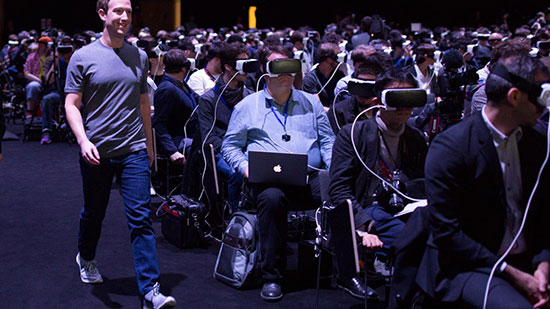In the March issue of e-flux journal, which was released earlier this week, Boris Groys considers how the internet, and art’s ever increasing integration with it, shape both art objects and the subjectivity of artists themselves. Check out an excerpt below, or the full piece here.
Artistic practice is usually understood as being individual and personal. But what does the individual or personal actually mean? The individual is often understood as being different from the others. (In a totalitarian society, everyone is alike. In a democratic, pluralistic society, everyone is different—and respected as being different.) However, here the point is not so much one’s difference from others but one’s difference from oneself—the refusal to be identified according to the general criteria of identification. Indeed, the parameters that define our socially codified, nominal identity are foreign to us. We have not chosen our names, we have not been consciously present at the date and place of our birth, we have not chosen our parents, our nationality, and so forth. All these external parameters of our personality do not correlate to any subjective evidence that we may have. They indicate only how others see us.
Already a long time ago modern artists practiced a revolt against the identities which were imposed on them by others—by society, the state, schools, parents. They affirmed the right of sovereign self-identification. They defied expectations related to the social role of art, artistic professionalism, and aesthetic quality. But they also undermined the national and cultural identities that were ascribed to them. Modern art understood itself as a search for the “true self.” Here the question is not whether the true self is real or merely a metaphysical fiction. The question of identity is not a question of truth but a question of power: Who has the power over my own identity—I myself or society? And, more generally: Who exercises control and sovereignty over the social taxonomy, the social mechanisms of identification—state institutions or I myself? The struggle against my own public persona and nominal identity in the name of my sovereign persona or sovereign identity also has a public, political dimension because it is directed against the dominating mechanisms of identification—the dominating social taxonomy, with all its divisions and hierarchies. Later, these artists mostly gave up the search for the hidden, true self. Rather, they began to use their nominal identities as ready-mades—and to organize a complicated play with them. But this strategy still presupposes a disidentification from nominal, socially codified identities—with the goal of artistically reappropriating, transforming, and manipulating them. The politics of modern and contemporary art is the politics of nonidentity. Art says to its spectator: I am not what you think I am (in stark contrast to: I am what I am). The desire for nonidentity is, actually, a genuinely human desire—animals accept their identity but human animals do not. It is in this sense that we can speak about the paradigmatic, representative function of art and artist.
Image: Mark Zuckerberg unveils a Facebook team dedicated to creating social experiences in virtual reality.
